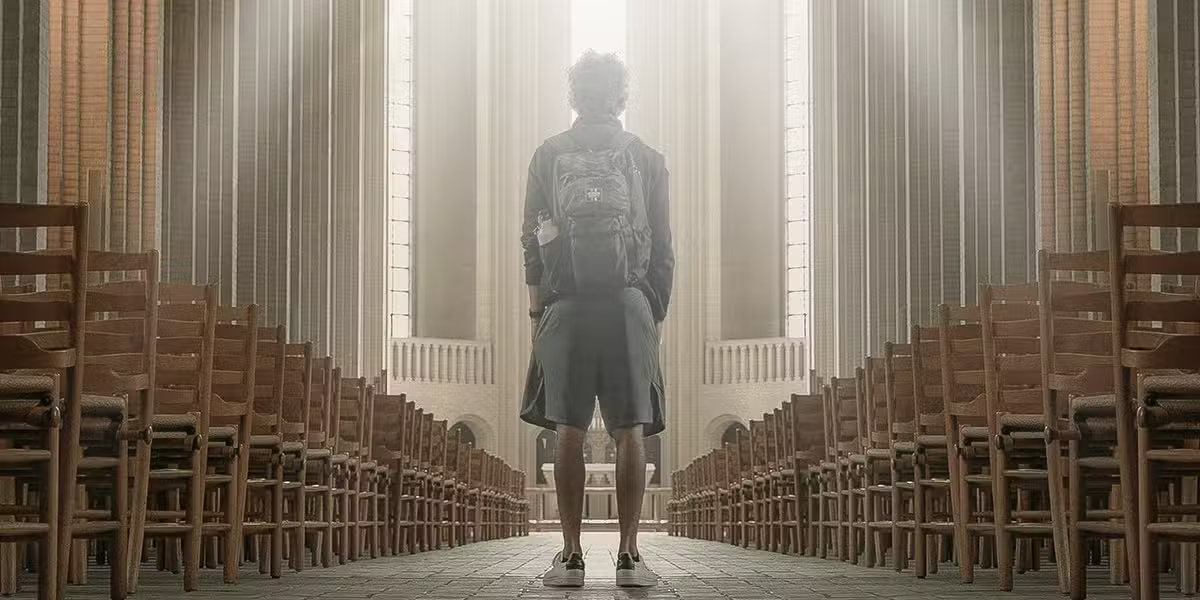This popular and enduring Christmas song’s plea for peace is as relevant today as when it was written, during the Cuban Missile Crisis.
Many people mistakenly assume this Christmas classic has been around for years and that it is of European origin. But it was written in 1962 during the Cuban Missile Crisis as a powerful plea for peace by a man who had experienced the horrors of war.
The song’s message of peace is as desperately needed today as it was then.
Seeking Goodness and Light
A brilliant musical career seemed assured for the French-born Noel Regney. He had studied at Strasbourg Conservatory and at the Conservatoire National de Paris. Then came the Second World War, when France was overwhelmed by Hitler’s German troops. Much against Regney’s will, he was drafted into the German army.
He hated the Nazis who occupied the land where he was born. So, while still in the German army, Regney became a member of the French underground. His assignments required him to remain in a German uniform. He collected information and, when possible, warned French resistance fighters of attacks the Germans were planning against them.
One mission would continue to haunt Noel Regney: He was assigned the task of leading a group of German soldiers into a trap where the French fighters could catch them in a crossfire.
Although Regney was shot that day, he survived. The French suffered only minor injuries. But the memory of the enemy soldiers falling to the ground, most of them dead, was etched in Noel Regney’s mind.
He never commented publicly on what took place that terrifying day. It has been said that he was intentionally wounded by the French to protect him from the Germans, in the belief that his injury would indicate he had no knowledge of the trap that had been set for the enemy.
Not long after this encounter, Regney deserted the German army and lived underground with the French for the rest of the war. “Only then did I feel free,” he once observed.
After the war, he worked for a number of years as the musical director of the Indochinese Service of Radio France and as music director at Lido, a popular nightclub in Paris.
In 1952, Noel Regney moved to Manhattan. He composed music for many early TV shows and commercial jingles, in addition to writing serious musical compositions. In 1971, Regney composed “Slovenly Peter,” a concert suite based on an old German folktale. Four years later, he completed a five-part cantata titled “I Believe in Life.” He also composed the 1963 hit “Dominique” (sung by Soeur Sourire, also known as “The Singing Nun”).
Little Lambs
In the late ’50s, Noel Regney married pianist Gloria Shayne after knowing her for only a few weeks. Their daughter, Gabrielle Regney, says about her mother, “She’s an extraordinary pianist and composer who has perfect pitch.”
Gloria wrote many popular songs recorded by well-known singers, including “Goodbye Cruel World” (James Darren’s recording peaked at number three on the Billboard charts) and “The Men in My Little Girl’s Life” (recorded by Mike Douglas). She collaborated with Jack Keller on “Almost There” (recorded by Andy Williams).
“My mother’s work tends to be more pop; my father’s is more classical and avant-garde,” says Gabrielle. When her parents collaborated, she says, “Usually, my mother wrote the words and my father wrote the music.” But they did the opposite when they composed “Do You Hear What I Hear?”
Of all their works, that simple Christmas song is the one that will continue to be treasured. Here is how it came to be:
In October 1962, the Soviet Union and the United States were involved in a crisis centered on missiles the Russians had installed in Cuba. The United States threatened military action if the missiles were not removed. The world trembled and prayed as these two nuclear powers stood eyeball-to-eyeball.
That October, as Noel Regney walked through the streets of New York, a sense of despair was in the air. No one smiled. Regney had endured the horrors of war. He knew the fear and terror of being close to death. The safe and secure life he had built for himself in the United States was on the verge of ending.
Christmas, which was supposed to be a time of peace and goodwill, was approaching. Noel Regney had been asked by a record producer to write a holiday song.
“I had thought I’d never write a Christmas song,” he recalled. “Christmas had become so commercial. But this was the time of the Cuban Missile Crisis. In the studio, the producer was listening to the radio to see if we had been obliterated.
“En route to my home, I saw two mothers with their babies in strollers. The little angels were looking at each other and smiling. All of a sudden, my mood was extraordinary.”
A glimpse of these babies filled Noel Regney’s heart with poetry. The little ones reminded him of newborn lambs. Thus, the song begins, “Said the night wind to the little lamb.” As soon as Noel arrived home, he jotted down the lyrics. Then he asked Gloria to write the music to accompany his words. “While walking down the street in New York, my mother heard trumpets playing the melody in her head,” explains Gabrielle Regney.
“Noel wrote a beautiful song,” Gloria said later, “and I wrote the music. We couldn’t sing it, through; it broke us up. We cried. Our little song broke us up. You must realize there was a threat of nuclear war at that time.”
Although their marriage didn’t last, her parents remained close friends, says Gabrielle.
Today, Gloria Shayne Baker is in ill health. Noel Regney died at age 80 in 2002 on the eve of the Christmas season. He was survived by his second wife, Susan, three children (Paul, Gabrielle and Matthieu) and a stepdaughter (Patricia). At his funeral Mass, celebrated at St. Mary’s Church in Ridgefield, New York, “Do You Hear What I Hear?” was performed.
Pray for Peace
There have been over 100 versions of “Do You Hear What I Hear?,” including early recordings by Perry Como and the Harry Simeone Chorale. Gladys Knight and the Pips, Destiny’s Child and Vanessa Williams are among the artists who have made more recent recordings. Noel Regney’s personal favorite was a recording by Robert Goulet, who nearly shouted out the line, “Pray for peace, people, everywhere.”
But it was the Bing Crosby 1963 recording that brought Noel Regney and Gloria Shayne’s song of peace to the nation’s attention. In those days, Crosby’s recordings were often instant hits; his version sold more than a million copies.
“Do You Hear What I Hear?” carried a beautiful message close to people in all walks of life. It became a popular Christmas carol, “a song high above the tree, with a voice as big as the sea.” But the message of peace was lost on many people.
“I am amazed that people can think they know the song and not know it is a prayer for peace, ” Noel Regney once told an interviewer. “But we are so bombarded by sounds and our attention spans are so short.”
Let us hope and pray that, when it is sung in churches worldwide during the Christmas season, this song of peace will remind us that “The Child, The Child sleeping in the night” came to “bring us goodness and light.”









6 thoughts on “Do You Hear What I Hear? The Story Behind the Song”
That is a beautiful, wonderful story. The man did something positive with his horrible, traumatic experiences. We wrote and produced music from it. Most of the time, when we go through some form of tragedy or unfortunate experience, we can find something good that came out of the experience. Turn it into something positive to help people.
This Christmas song is one of the most beautiful ever written; I’ve been listening to and singing since childhood but just learning about who wrote it and the story behind it. It definitely brings back the religious/spiritual meaning of Christmas which seemed to deteriorate due to the holiday becoming more commercialized.
The author experienced some traumatic, horrible experiences. He did something positive with the experience. He wrote some beautiful music that helped the world. The world got to hear some beautiful music. It led to some world peace.
This is truly a gift from God! I was before Jesus in Eucharistic Adoration and the Lord Jesus gave me this song to listen to. As I was before Him, this song came to me. Often the Lord Jesus gives me songs.i Google for the meaning behind the song, so I can understand His communication to me.
I googledthe meaning of this song
Beautiful prayer.
I am grateful to have seen this story, or a similar one, around 2017 or so. I had taught this song to choruses prior to that, having no idea of it’s signifcance.
Now I want everyone to know!💜
I am planning to sing it in a week or so, and include a link to this story in the announcements.
Comments are closed.